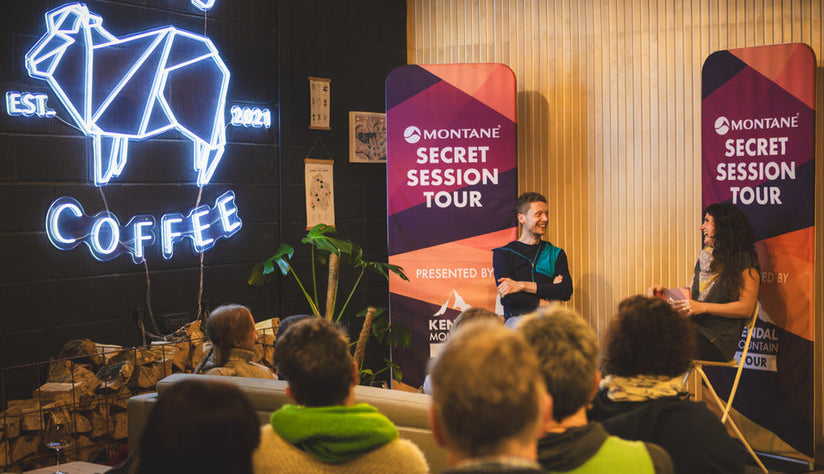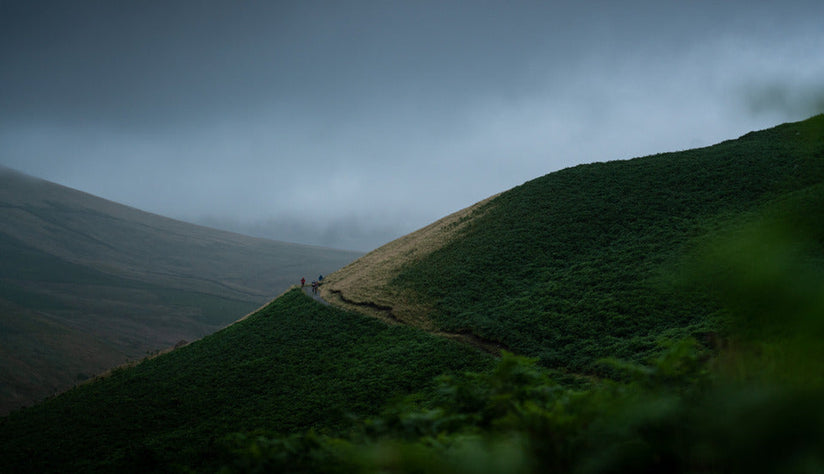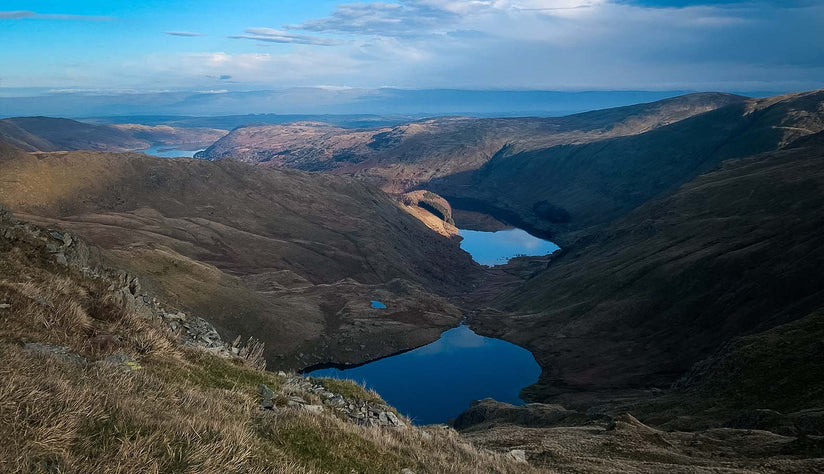This season, as part of our Made for More campaign, we’re pushing the limits of what Montane clothing is capable of. Proving just how versatile Montane kit can be, one activity we think perfectly captures this season’s ethos is bikepacking.
But what exactly is bikepacking and how, we hear you ask, would you take on such a sport? Montane athlete Jenny Tough is probably better known as a fastpacker (having recently accomplished her multi-stage challenge ‘run the world’s mountains’), but she is also a passionate cyclist, with years of experience bikepacking around the globe.
Whether you’re a beginner to the world of bikepacking, not sure where to begin, or a passionate cyclist looking for some handy tips to help you on your next adventure, don’t miss Jenny’s essential guide to bikepacking…

A brief overview
Bikepacking is one of the purest forms of freedom: under human power and two wheels, you can go almost anywhere. The distances covered by a bike in a day can open up possibilities for exploration, and carrying your essential kit on the bike frame creates a comfortable and versatile system.
I started with a traditional bike touring set up more than a decade ago, and over the years, as equipment improved and my skills along with it, I have dialled in my bike setups and explored over 40 countries in a variety of cycling disciplines, both racing and touring. Road or gravel bikepacking adventures allow me to cover incredible distances that I could never imagine doing on foot, while MTB setups grant epic Type 1 Fun mixed with hike-a-bikes.
I’m a big believer that there are no solid rules in bikepacking - it’s very much a ‘Choose Your Own Adventure’ category. The best bike is the bike that you love, and the equipment is what suits your travel style best. While the high-end equipment is truly fantastic, this is a sport that is absolutely feasible on a shoestring, too. So, in advance of the below, please accept that these are only my opinions developed over many miles of bikepacking, and only offered as a guide - not a rule book.
How to Plan
There are so many bikepacking routes available online, and choosing some of these is a great place to start. Taking beta from other riders and even downloading their route files takes a lot of the intimidation factor out of a first bikepacking trip, and the shared experience of completing a popular route really brings you into the community.
I frequently use other riders’ routes as a base for creating my own journey, and then add in side trips that fascinate me. Komoot is a great resource for finding ‘highlights’ to see in a region, and bikepacking.com has a rapidly growing database of routes around the world.
I typically load my route into a handlebar mounted computer, but use my phone frequently to navigate changes in my route as I go along. Paper maps are always great, but notoriously difficult to operate while pedalling.
Essential Preparation
In terms of fitness, it’s vital to plan your trip being realistic about how hard you want to ride. Of course, being stronger on the bike will make your tour more comfortable, but if you work within your current limits, there’s no such thing as “not being in good enough shape” for a bikepacking trip. Being comfortable in your saddle and adjusting your bike to fit you and avoid injury are the most important bits of physical preparation.

Essential Gear
Firstly, let’s start with the bike. Any - and I mean any - bike will do. Bikepacking was largely born out of a desire to use more versatile bikes (as in, not just restricting yourselves to clunky touring bikes), and that ethos is alive and well. I’ve seen bikepacking setups on very high-end road bikes, full-sus MTBs, unicycles, handcycles, tandems, and everything in between. The best bike is the bike that you are comfortable on. (That said, I am wildly fanatic about gravel bikes as the ultimate touring machine).
Luggage: My first ‘bikepacking’ setup was just a few dry bags that I tied to my frame with straps and bungee cords. It worked quite well, but bikepacking luggage has come a long way and there are some truly durable and intelligent options, if you want to upgrade your experience.
Equipment: The ethos dividing bike touring and bikepacking is essentially the attitude to equipment. Bikepacking favours going with only the lightweight essentials in order to allow riding further, faster, and living simply. I love packing light and proving to myself just how little I need to be happy outside.
Camping: No one said you have to camp in order for it to be a bikepacking trip, but for many it’s the most important part of the experience. Modern, lightweight tents with small pole sections will fit on your bike, but for the sake of reducing weight and space, a bivvy is a classic bikepacking choice. I usually sleep out with just a hydrophobic sleeping bag and a very small sleeping mat. Rolling out this simple bed next to my bicycle in a field or on a beach somewhere is one of the simplest forms of pleasure in my life. And if I’m really looking for happiness, a small stove and tin mug so there’s hot dinner and then coffee in the morning.
Clothing: Lycra or not - it doesn’t matter. Wear clothing that will be comfortable on the bike, and dry out easily. I prefer natural fabrics for multi-day adventures, and will always say the most important piece of kit is a solid waterproof (not one of those little cyclist things - but a real jacket!) and insulated layer.
My typical equipment list:
- Sleeping bag
- Insulated mat
- Stove/fuel/mug/spork
- Bike tools + spare tubes
- Waterproof jacket
- Insulated jacket
- Wearing: chamois, baggy shorts, merino top, riding gloves, merino socks, helmet
-
Warm sleeping layers (usually Montane fleece tights + primino tops)
- Tech: bike computer, phone, bike lights/headtorch, battery pack

How to Pack the Bike
Over the years, and especially through ultra racing where being quick in transitions is everything, I have really honed in how I like my bike packed. Everyone is different, but this is how I do things:
Top tube: Essentials that I frequently use sit right under my nose on the top tube. Phone, wallet, lip chap, sunscreen.
Front roll bag: Sleeping bag + mat, and any clothes I only use for sleeping in. I only want to access this bag at the end of the day, so nothing I might need in the hours in between.
Frame bag: It’s good to put weightier items in the centre of the bike, so this is where I’ll store tubes, bike tools, and snacks. Water will of course sit just below either in bidons or, if using a full-frame bag, a bladder.
Saddle bag: Usually the biggest piece of luggage, this is the only bag that requires a bit of technique - a swinging or sagging saddle bag is a very sad thing indeed. Pack heaviest items towards the stem, and use things like jackets to fill in any gaps so that the bag is filled perfectly.
Off the Bike
Food: Depending on where you’re going, food might be something you pack with you, or something you source as you go. If I’m taking a stove, I prefer dehydrated meals that only need to have hot water added to them, and throughout the day rely on snacks that either sit in my frame bag or in food pouches on my handlebars. Bars, dry food, candy, etc. Whatever you like! Of course, another option is to ‘credit card tour’ and simply stop in cafes and pubs along the way. This can be a great way to explore the culture of the region where you’re travelling, and of course make the bike lighter.
Camping: The most important principle is to follow Leave No Trace practices. Take your bike somewhere that you won’t be disturbing anyone, do not create a fire circle if one doesn’t already exist, and clean up your campsite in the morning. Bury human waste if you can’t find a toilet.
Top Tips
- Waterproof EVERYTHING
- Sudocream is the cheapest and best ointment for saddle sores
- Go for the widest tyres you can fit, and set them up tubeless if you can. You will be far, far more comfortable running a lower tyre pressure.
- Consider using your phone as your navigation, camera, book, diary, music, etc. It’s kind of amazing how many items can fit into one small handheld item.
- Mechanicals can be really intimidating - youtube has oodles of instructional videos for every possible break (as long as you break down somewhere that has phone signal!).
- Wrap duct tape around your bike pump - it’s the best place to store it.
- Cable ties can fix a lot of problems.
- Keep wet wipes handy in case you have to fix your bike and end up with your hands covered in oil (you can get eco-friendly ones at any outdoor shop).
- Clean and oil your chain every night.
















